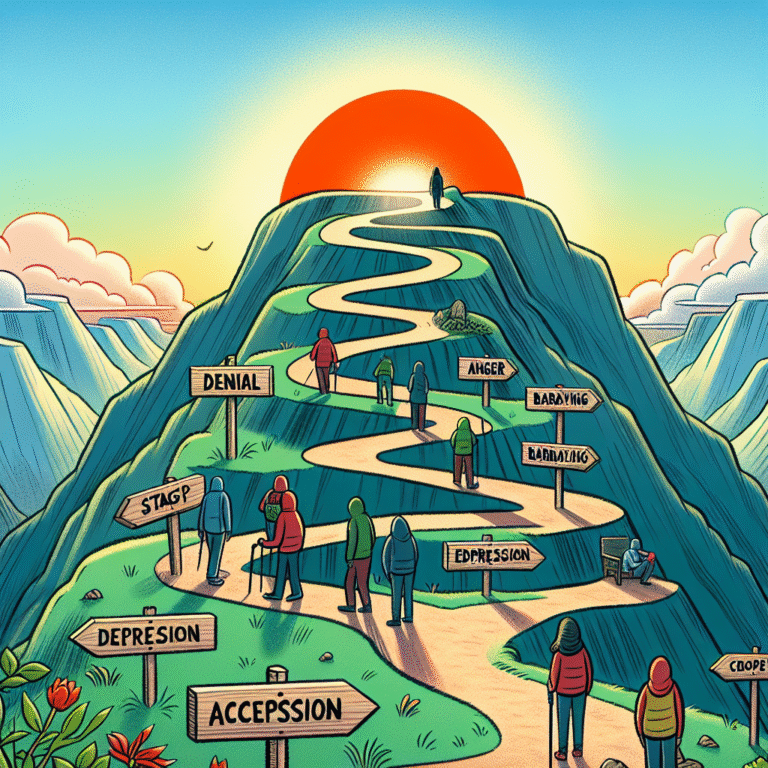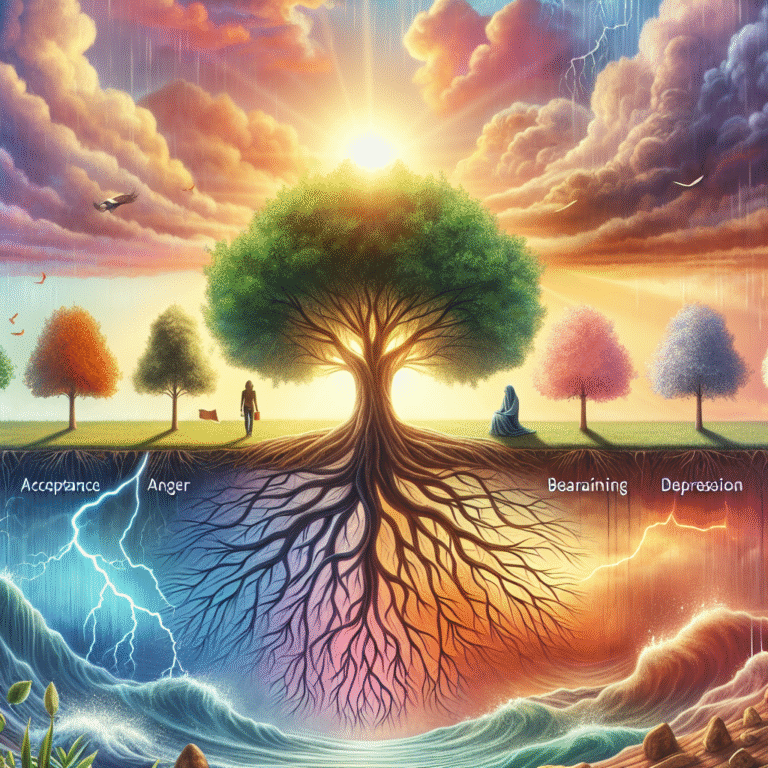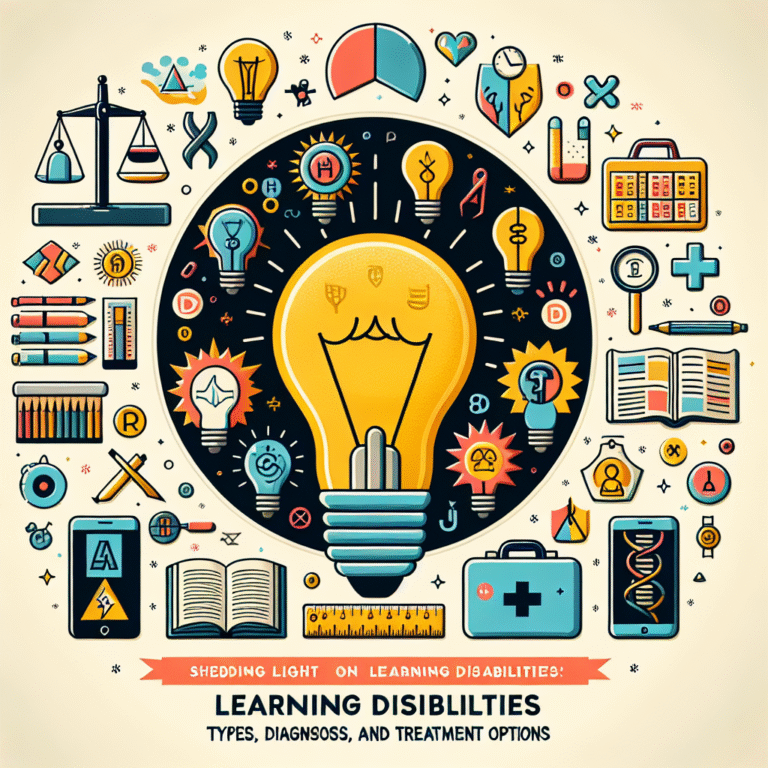
Identifying the Signs: A Comprehensive Guide to the Symptoms of Depression
Introduction
Depression is often described as a silent epidemic, affecting millions across the globe yet frequently dismissed or overlooked. In our fast-paced society, where mental health is still stigmatized, understanding the symptoms of depression is paramount. "Identifying the Signs: A Comprehensive Guide to the Symptoms of Depression" aims to illuminate this often-misunderstood disorder, equipping readers with the knowledge necessary to recognize both subtle and overt indicators of mental distress.
As we delve into this topic, we aim to not only outline the symptoms but also highlight the significance of timely identification and intervention. By demystifying depression, we empower individuals to seek help, support loved ones, and foster a community of understanding and compassion.
Understanding Depression
Defining Depression
Before we embark on identifying the signs, it’s essential to define what depression is. Depression, clinically referred to as Major Depressive Disorder (MDD), is characterized by persistent sadness, hopelessness, and a lack of interest or pleasure in daily activities. It is not merely a state of sadness; it’s a serious mental health condition that can disrupt every aspect of life, from personal relationships to professional endeavors.
Key Statistics:
- According to the World Health Organization, over 264 million people are affected by depression globally.
- Women are statistically more likely to be diagnosed than men, though men face significant challenges in acknowledging their mental health struggles.
The Importance of Identifying the Signs
Recognizing the symptoms of depression advances the chances of effective intervention and treatment. Identifying the signs is not just about comprehension; it’s about action. Early detection can significantly influence recovery trajectories and provide individuals with the necessary resources to cope and heal.
Common Symptoms of Depression
Recognizing the signs of depression requires us to examine a spectrum of symptoms. These can be grouped into emotional, physical, cognitive, and behavioral categories.
Emotional Symptoms
- Persistent Sadness: One of the hallmark symptoms; individuals may experience an overwhelming feeling of sadness that lingers.
- Irritability: Heightened irritability may occur, particularly in men and children, often masking the underlying depressive symptoms.
Case Study: Sarah’s Journey
Sarah, a 32-year-old teacher, began feeling persistently sad after a rough breakup. Initially, she dismissed her feelings as normal grief but soon recognized her irritability at work was affecting her relationships. A turning point came when Sarah decided to seek therapy after realizing her emotional state was impacting her happiness. This case illustrates the necessity of identifying these emotional signs early.
| Emotional Symptoms | Description |
|---|---|
| Persistent Sadness | Ongoing feelings of sorrow |
| Irritability | Increased frustration and anger |
Physical Symptoms
- Fatigue: Chronic tiredness that does not improve with rest can be a sign of depression.
- Sleep Disturbances: Insomnia or sleeping excessively often accompanies depressive states.
Case Study: John’s Experience
John, a 45-year-old engineer, always enjoyed an active lifestyle. However, he started experiencing extreme fatigue without a clear cause. He attributed it to work stress but later discovered that his sedentary lifestyle and poor sleep habits were signs of depression. John’s experience underscores the importance of recognizing physical symptoms as potential indicators of deeper mental health issues.
| Physical Symptoms | Description |
|---|---|
| Fatigue | Constant tiredness, low energy |
| Sleep Disturbances | Insomnia or excessive sleeping |
Cognitive Symptoms
- Difficulty Concentrating: Individuals may struggle to focus on tasks, from work to hobbies.
- Pervasive Feelings of Worthlessness: A harsh internal dialogue that leads to self-doubt and low self-esteem is common.
Case Study: Maria’s Challenges
Maria, a university student, noticed her grades plummeting and her inability to concentrate on her studies. She had long held herself to high academic standards, but her feelings of worthlessness led to procrastination and avoidance. Maria’s struggles emphasize how cognitive symptoms can create a vicious cycle that exacerbates depressive states.
| Cognitive Symptoms | Description |
|---|---|
| Difficulty Concentrating | Trouble focusing on tasks |
| Feelings of Worthlessness | Negative self-perception |
Behavioral Symptoms
- Withdrawal from Activities: A shift away from once-enjoyed activities often signals significant emotional distress.
- Changes in Appetite: Either loss of appetite or overeating may accompany depressive episodes.
Case Study: Mark’s Withdrawal
Mark, a once-social individual, began avoiding friends and family after losing his job. Initially seen as a phase of introspection, his withdrawal became a clear sign of depression. This highlights the importance of recognizing behavioral changes in oneself and others.
| Behavioral Symptoms | Description |
|---|---|
| Withdrawal from Activities | Avoiding friends or hobbies |
| Changes in Appetite | Eating significantly less or more |
Recognizing Variations in Depression Symptoms
Depression in Different Age Groups
Recognizing the signs of depression can vary significantly across different age demographics.
Children and Adolescents:
- Symptoms often manifest more behaviorally (e.g., irritability, loss of interest in school) than emotionally.
Case Study: Anna’s Adolescent Struggles
Anna, a 14-year-old, showed behavioral changes rather than overt sadness. Her grades slipped, and she distanced herself socially. Understanding that symptoms manifest differently in adolescents is crucial for parents and educators.
Older Adults:
- Often exhibit cognitive decline, which can sometimes mask underlying depression, leading to misdiagnosis.
Case Study: Leonard’s Silent Battle
Leonard, an 80-year-old widower, faced cognitive difficulties attributed to aging. However, with encouragement, his family sought professional help, discovering that he was suffering from depression. Identifying how different age groups exhibit symptoms is vital for appropriate care.
Depression in Men vs. Women
While depression affects both genders, the symptoms may present differently.
Men:
- Often display anger, irritability, or risk-taking behaviors rather than sadness.
Women:
- Typically experience a more prominent display of sadness and emotional vulnerability.
Case Study: Michael and Lisa
Michael, often termed "the strong one" in his friend group, exhibited frequent irritability and risk-taking behavior, indications of his struggle. In contrast, Lisa openly expressed sadness but found it difficult to engage socially. Their stories reflect how gender influences the expression of depressive symptoms, emphasizing the need for tailored approaches to mental health.
The Impact of Depression on Daily Life
Depression does not exist in a vacuum; it influences every area of a person’s life, from relationships to work performance.
Relationships
- Depression can lead to strained relationships as individuals withdraw from social interactions or experience irritability that others may misinterpret.
- Open communication becomes crucial for partners and families to understand the struggles of a loved one.
Work
- A decline in productivity, difficulty concentrating, and absenteeism can lead to professional repercussions, exacerbating the cycle of depression.
Seeking Help: Taking Action
When to Seek Help
Recognizing the signs is just the beginning. It is essential to act upon these observations. If you or someone you know is experiencing these symptoms consistently over two weeks, it’s crucial to seek professional help.
Types of Treatment
- Therapy: Various forms—like cognitive-behavioral therapy (CBT)—help individuals identify and reframe negative thought patterns.
- Medication: Antidepressants may be prescribed to help balance mood-regulating neurotransmitters in the brain.
- Lifestyle Changes: Incorporating physical activity, a balanced diet, and mindfulness practices can enhance overall well-being.
Case Study: Emma’s Path to Recovery
Emma sought therapy after suffering from persistent sadness. Through cognitive-behavioral therapy, she learned to challenge her negative thoughts and surrounding herself with supportive friends transformed her mental health. Her journey exemplifies recovery as a multifaceted process often involving therapy and actionable lifestyle changes.
Conclusion: Empower Yourself and Others
Identifying the signs of depression is pivotal in fostering a culture of understanding and support. By equipping ourselves and those around us with the knowledge of how to recognize symptoms, we can collectively navigate the complexities of mental health. Remember that seeking help is a sign of strength, not weakness, and the journey to recovery is attainable.
Motivational Takeaway
You are not alone. Whether you’re experiencing these symptoms or observing them in someone else, remember that help is available. Beginning a conversation or reaching out to a professional can lead to transformative outcomes. Let this guide serve as a beacon of hope and a stepping stone toward better mental health.
FAQs
1. What are the main signs of depression?
The main signs include persistent sadness, irritability, fatigue, changes in sleep patterns, difficulty concentrating, and withdrawal from daily activities.
2. How long do symptoms of depression last?
Symptoms can last for weeks, months, or even years without intervention. It’s important to seek help if symptoms persist beyond two weeks.
3. What should I do if I recognize these symptoms in myself or a loved one?
Reach out to a mental health professional, engage in open conversations about mental health, and encourage supportive environments for recovery.
4. Can children experience depression?
Yes, children can experience depression, but symptoms often manifest differently, such as irritability or behavioral changes. Prompt recognition and help are crucial.
5. What are the treatment options for depression?
Treatment options include therapy (like CBT), medication (antidepressants), and lifestyle changes, including exercise, dietary adjustments, and mindfulness practices.
In exploring "Identifying the Signs: A Comprehensive Guide to the Symptoms of Depression," we have highlighted the importance of awareness, the variety of symptoms, and the necessity for proactive measures in the face of mental health challenges. With continued conversation and compassion, we can create a world where mental health is prioritized and understood.













